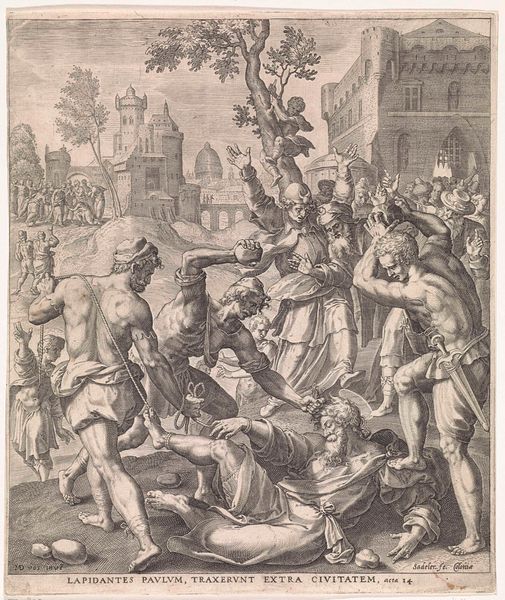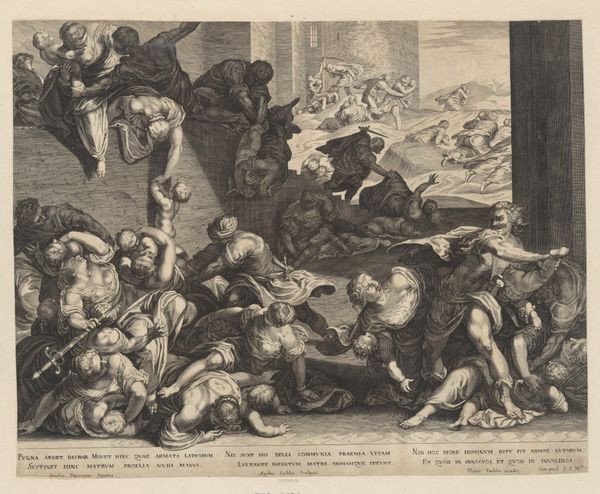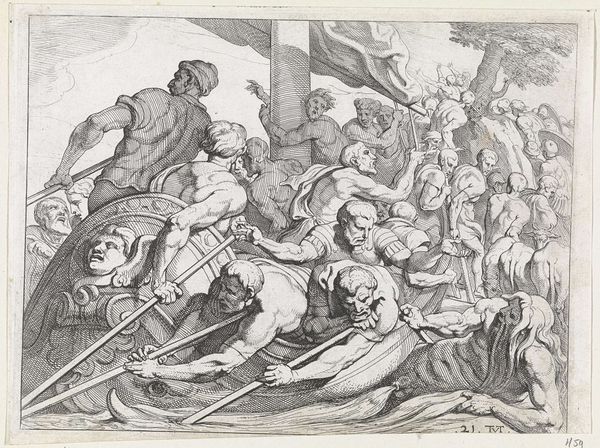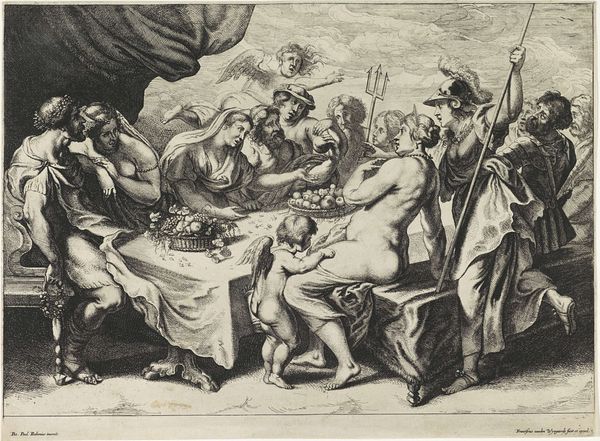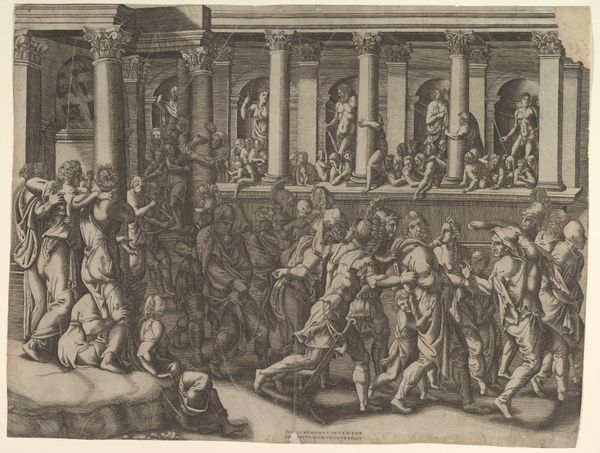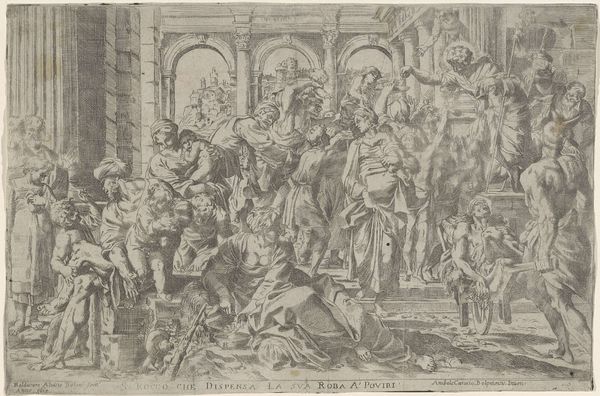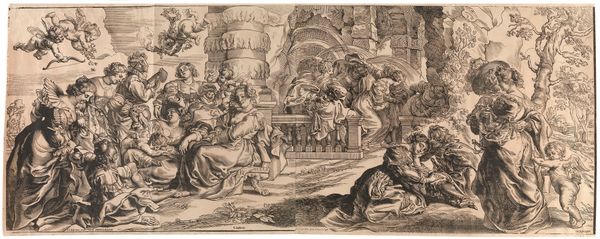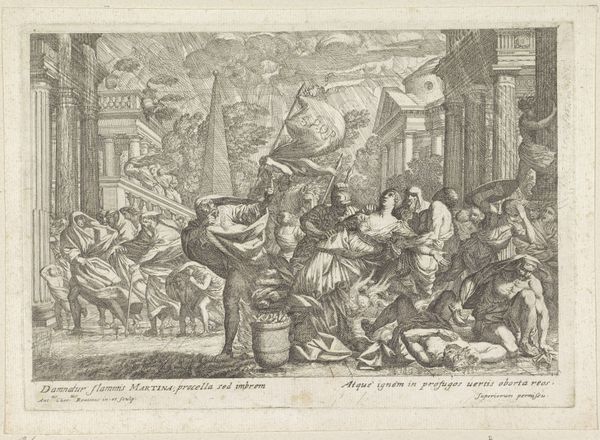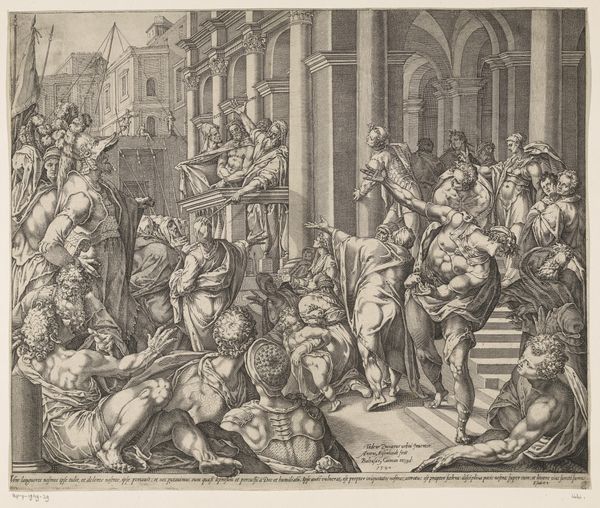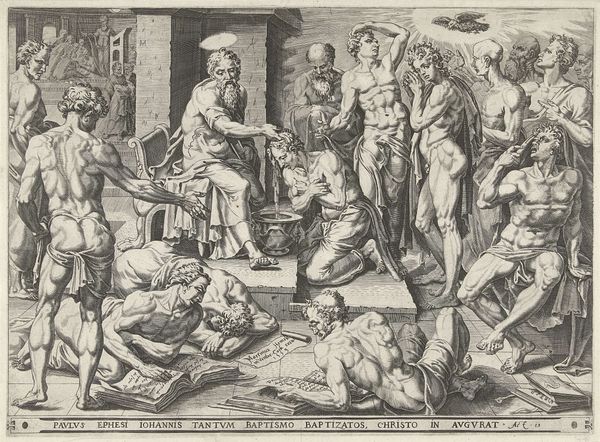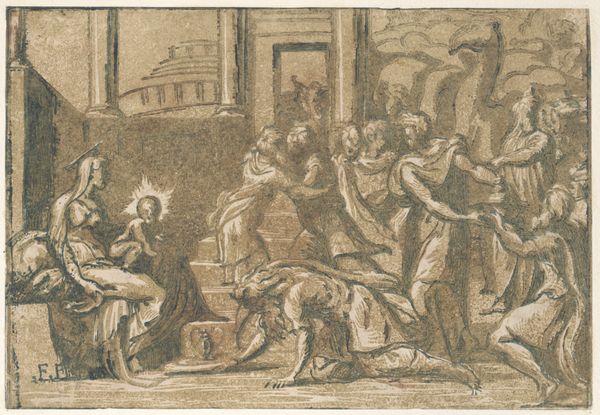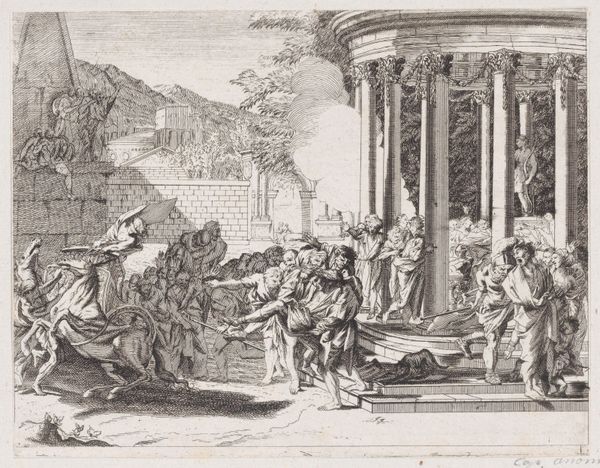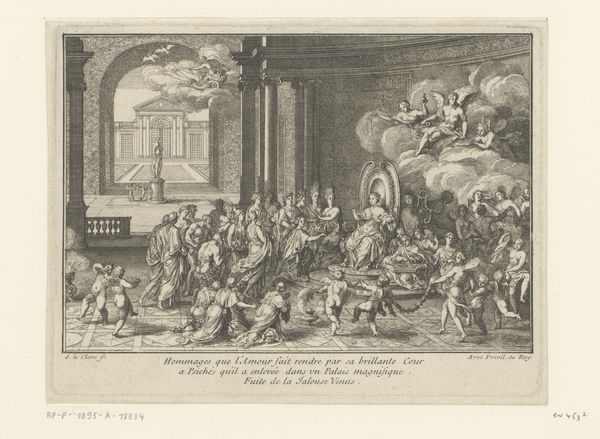
print, engraving
#
baroque
# print
#
figuration
#
line
#
history-painting
#
engraving
Dimensions: height 225 mm, width 306 mm
Copyright: Rijks Museum: Open Domain
Editor: This engraving, titled *Ester voor Ahasveros*, created before 1689 by Jacopo Cotta, has a strong narrative feel. I'm immediately drawn to the contrast between Esther's submissive posture and the king's imposing figure on his throne. What's your interpretation of this dynamic? Curator: The contrast is indeed key, isn't it? Look closely. Consider the patriarchal power structures inherent in this biblical scene. Esther, risking her life by approaching Ahasuerus uninvited, challenges the king's authority in her vulnerability. It becomes a fascinating dance of gender and power within a rigid social hierarchy. How does Cotta's technique contribute to this sense of tension, would you say? Editor: The delicate line work almost makes Esther appear fragile, while the king's robes and throne have a greater density and weight. The implied light seems to spotlight her plea, even with the stoic guard watching over. Curator: Exactly. Now, thinking about the broader historical context, what does it mean to represent this scene in a Baroque print? How might contemporary audiences have understood this visual encoding of feminine agency and the disruption of male power? Do you see echoes of feminist critiques within its lines? Editor: It's like a tightrope walk. Esther's power comes from her plea and the story about her in the first place. Any success would likely be short-lived or circumstantial... it doesn't completely break free of the patriarchal structure, right? Curator: Precisely! It shows us the nuanced reality. This piece is about the constraints placed upon women even as they attempt to exercise their influence, the ways that power is negotiated and resisted within very specific boundaries. So, what has struck you most profoundly in our analysis? Editor: How the artist portrayed an iconic scene from a fresh perspective with layers of political depth. I'll never see this artwork the same way. Curator: Indeed. Engaging with artworks critically, always seeking to understand their historical, social, and political resonance, enriches our understanding of both the past and the present.
Comments
No comments
Be the first to comment and join the conversation on the ultimate creative platform.
